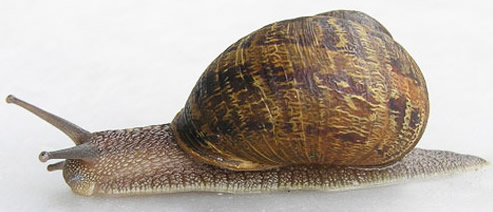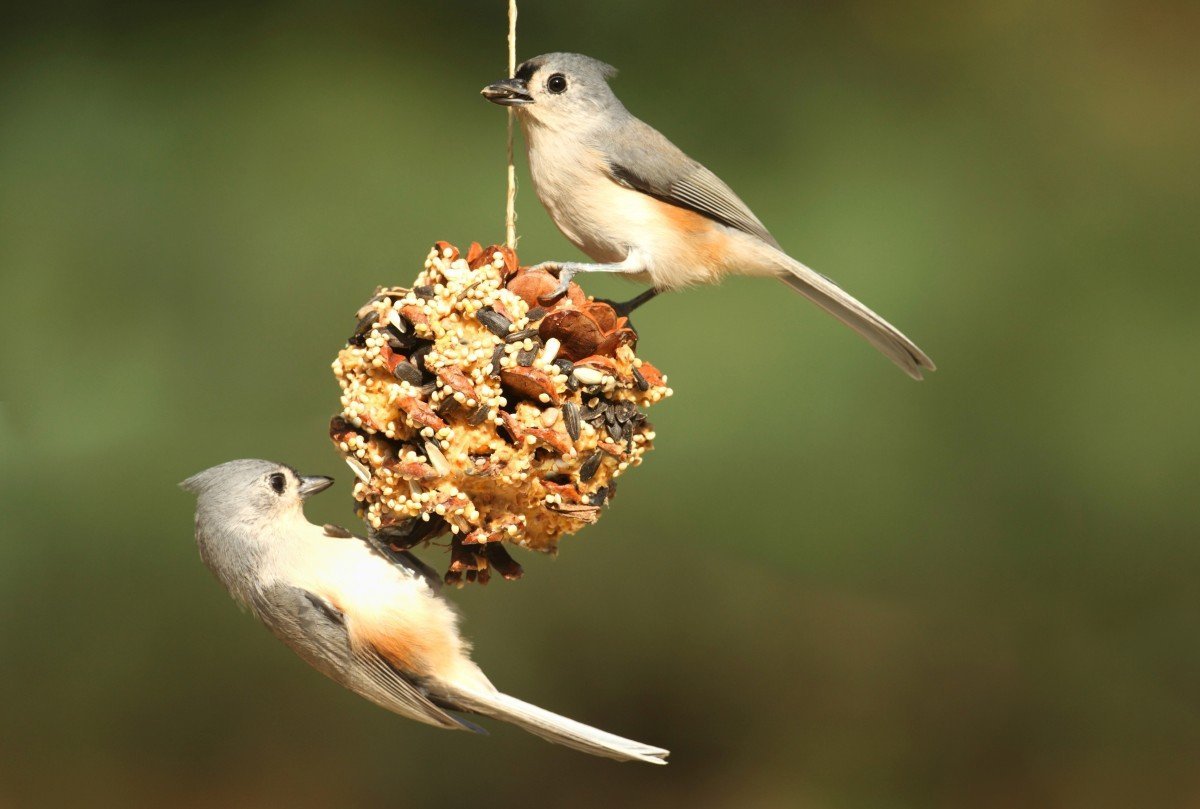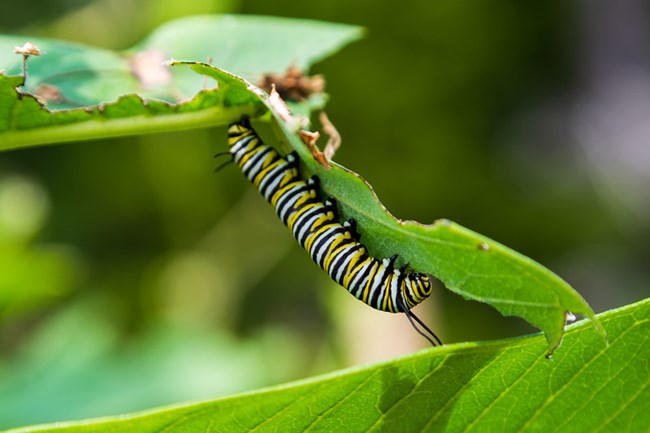You might have human neighbors living next door, but even closer you have thousands of tiny critters living right in your own yard! Sometimes you might choose plants and features specifically to attract them, such as flowers for a butterfly garden or feeders for the birds. Other times, you take measures to minimize unwanted visitors, such as grubs, with different types of pest control. But sometimes there is a gray area of uncertainty about whether a certain critter will cause problems or not—and we at SoilKit are here to answer these questions! Here are four common sorts of critters people are unsure about welcoming into their yards and if you need to do anything when you spot them.
1. Snails and slugs. These two types of creatures are often associated with each other due to their similar slimy bodies, eyes on stalks, and sticky trails left behind. But their affects on your plants can be quite different. Most snails, including the banded snail (Cepaea spp.) most common in North America, feast on dead plant material while leaving living plants intact. Thus, they can play an important role in recycling plant nutrients in your yard and returning them to the soil. Banded snail species range in color from bright yellow to light brown, often with a spiral pattern on the shell, and are also called lemon snails or grove snails. Unlike snails, slugs can wreak havoc in the garden! Common methods of control include picking off by hand, sprinkling with salt (although this can affect your plants/soil in excess), or making traps with beer. An important exception to the innocuous nature of snails is the invasive brown garden snail (Cornu aspersum), which is darker, larger, and with a woody texture in the shell color compared to the banded/yellow garden snails mentioned earlier. Click here for more information on identifying and managing this invasive snail.

Image: Banded snail By Cepaea_nemoralis_(Mad_Max).jpg: Mad Maxderivative work: Papa Lima Whiskey 2 - This file was derived from: Cepaea nemoralis (Mad Max).jpg:, CC BY-SA 3.0, https://commons.wikimedia.org/w/index.php?curid=18750276

Image: invasive brown garden snail. Source: Bill Frank via Univerisity of Florida
2. Spiders. Spiderwebs in lawns are sometimes confused with harmful fungal diseases such as dollar spot, but actual spiderwebs are not a problem themselves! Rather than harming your grass or other plants, spiders are important insect predators and thus are your allies against many types of pests that affect plants or even humans in cases like mosquitoes. Since dagerous spiders (i.e. black widows and brown recluses) don't prefer the habitat of a grassy lawn, generally letting spiders be in your yard will only work to your advantage.

Image: spiderwebs in the lawn via RadioIowa
3. Birds. From casual observers to serious birdwatchers, many people enjoy welcoming birds into their yards with birdseed, birdbaths, birdhouses, and other fun methods. One of my treasured childhood memories is collecting pinecones in the fall, covering them with peanut butter, rolling them in birdseed, and hanging them up for the birds. But did you know that flocks of birds descending on your lawn can be a sign of an underlying issue? If you have a grub infestation, it will attract birds and other wild animals such as racoons to start digging through your lawn looking for a treat. A bird-friendly lawn can help keep insect populations down overall, but take note of any increase in birds pecking at your grass as a warning that you may need to take further action. Many available grub control methods pose a low risk to birds when used as directed, including chemical and biological control options.

Image: birds at a pinecone birdfeeder, via https://www.swansonsnursery.com/diy-pinecone-bird-feeder
4. Caterpillars. Caterpillars are often viewed as pests since they love chowing down on anything green in your yard, and this is certainly the case for invasive species such as larvae of the spongy moth (gypsy moth) and cabbage white butterfly, just to name a couple. However, many native caterpillars transform into essential pollinators through metamorphosis later in their life cycle. Additionally, caterpillars are an important food source for birds, which will in turn keep other pest populations in check as well. If you like butterflies, you might even specifically grow plants to feed certain caterpillars! A noteworthy example is growing milkweed to support monarchs. Click here to learn more about supporting native caterpillars in your yard. One charismatic caterpillar you might want to look out for this October is the banded woolly bear (Pyrrharctia isabella), whose coloration is traditionally thought to predict the severity of the upcoming winter. You can read about them on the Old Farmer’s Almanac.

Image: Monarch caterpillar on milkweed, via Friends of Acadia/National Park Service

Image: Woolly Bear Caterpillar via University of Missouri

Comments
0 comments
Please sign in to leave a comment.